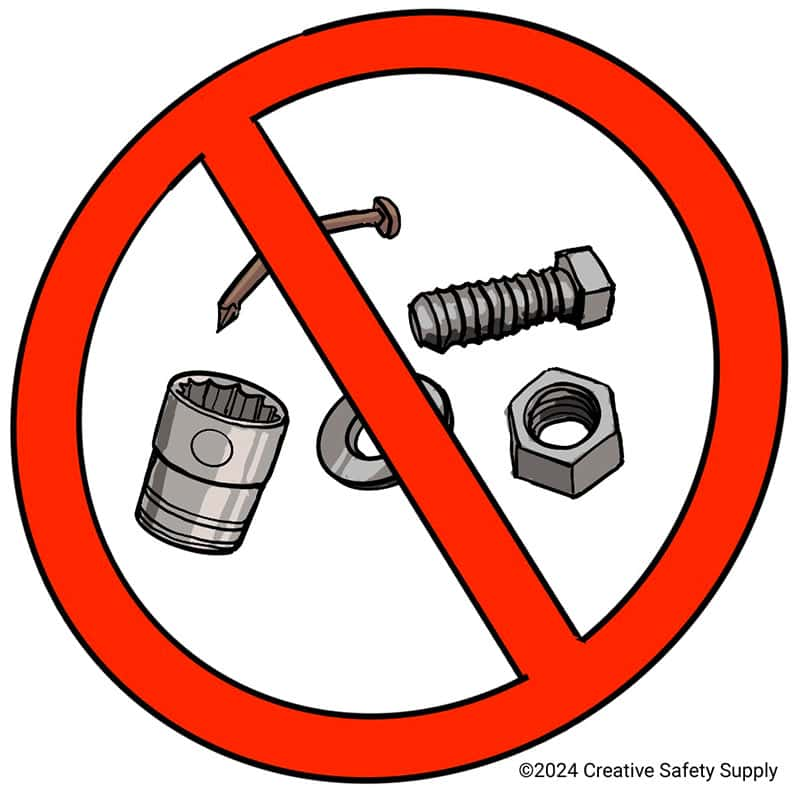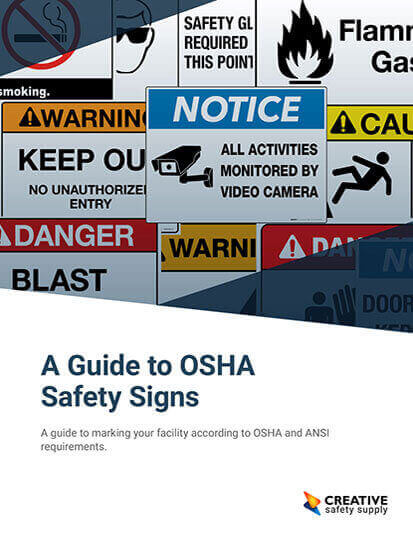
FOD is an acronym that stands for 'Foreign Object Damage' or foreign object debris, depending on the context. FOD is a term used in various domains, such as aviation, aerospace, manufacturing, and military, to refer to any damage or hazard caused by objects or substances that are not supposed to be present in a certain environment or system. FOD can have serious consequences for the safety, quality, and efficiency of the operations and products involved. Therefore, preventing and managing FOD is a crucial task for many industries and organizations. In this article, we will examine the core elements of FOD, its significance and history in different domains, and its connections with other related concepts. We will also explore the practical applications and benefits of FOD prevention and control strategies.

The Core Elements of FOD
FOD can be classified into two interrelated categories: Foreign Object Debris and Foreign Object Damage.
Foreign Object Debris
Foreign object debris (FOD) is any object, particle, substance, debris, or agent that is alien to a vehicle, system, or environment, and that could potentially cause damage or harm to it. For example, FOD in an aviation context could include:
- Tools, parts, and loose hardware
- Building materials
- Paper, paper clips, pens, coins, and badges
- Fragments of broken pavement
- Trash, food wrappers, and beverage containers
- Rocks, sand, and loose vegetation
- Baggage tags and pieces of luggage
- Hats, rags, and gloves
- Birds, wildlife, and stray animals
- Volcanic ash
- Humans
FOD can originate from various sources, such as personnel, equipment, infrastructure, environment, or wildlife. FOD can also migrate from one location to another, such as from the runway to the aircraft engine, or from the factory floor to the product assembly. FOD can vary in size, shape, weight, material, and composition, and can have different effects depending on the nature and level of the hazard.
Foreign Object Damage
Foreign object damage (FOD) is any damage or harm attributed to foreign object debris that can be expressed in physical or economic terms, and that may or may not degrade the product’s safety and/or performance characteristics. For example, FOD in an aerospace context could include:
- Shredded fan blades when sucked into a turbojet
- Blown out tires at high speeds
- Damaged delicate components when trapped inside of an equipment housing
- Frozen control mechanisms when lodged next to levers and handles
- Crashed aircraft due to engine failure or loss of control
FOD can result in minor or major damage, depending on the severity and location of the impact. FOD can also cause direct or indirect damage, depending on whether the damage is visible or hidden, and whether it affects the primary or secondary functions of the system. FOD can have various consequences, such as:
- Reduced safety and reliability of the product or system
- Increased maintenance and repair costs and time
- Decreased productivity and efficiency of the operation or process
- Lowered quality and performance of the product or system
- Increased liability and litigation risks and costs
- Damaged reputation and customer satisfaction
The Significance and History of FOD
FOD is a significant issue for many domains, especially those that involve high-speed, high-precision, high-value, or high-risk operations or products, such as aviation, aerospace, manufacturing, and military. FOD can affect the safety and health of the personnel, customers, and public involved, as well as the environmental and economic sustainability of the industry or organization. Therefore, FOD prevention and control is a vital part of the quality management and risk management systems in these domains.
FOD has a long history that dates back to the early days of aviation and aerospace development. Some of the historical examples of FOD incidents include:
- The 1933 crash of the USS Akron, a US Navy airship, that killed 73 people. The crash was partly caused by a FOD-induced malfunction of the rudder control cable.
- The 1959 explosion of the Vanguard TV3 satellite, the first US attempt to launch a satellite into orbit. The explosion was caused by a FOD-induced short circuit in the guidance system.
- The 1967 death of Gus Grissom, Ed White, and Roger Chaffee, the crew of the Apollo 1 spacecraft, during a pre-launch test. The fire that killed them was fueled by a FOD-induced spark in the electrical wiring.
- The 1986 explosion of the Challenger space shuttle, that killed seven astronauts. The explosion was caused by a FOD-induced failure of the O-ring seal in the rocket booster.
- The 2000 crash of Air France Flight 4590, that killed 113 people. The crash was caused by a FOD-induced rupture of the fuel tank, after the Concorde ran over a metal strip on the runway.
- The 2009 emergency landing of US Airways Flight 1549, that saved 155 people. The landing was caused by a FOD-induced loss of engine power, after the Airbus A320 hit a flock of geese.
These and many other FOD incidents have prompted the development and implementation of various FOD prevention and control measures, such as:
- FOD awareness and education programs for the personnel and customers
- FOD inspection and detection procedures and technologies
- FOD removal and disposal methods and tools
- FOD reporting and analysis systems and databases
- FOD design and engineering solutions and standards
The Connections with Other Related Concepts
FOD is connected with other related concepts that share similar goals or methods, such as:
- Lean manufacturing: a systematic approach to eliminate waste and improve efficiency and quality in the production process. FOD prevention and control is a part of the lean manufacturing philosophy, as FOD is considered a form of waste that reduces value and increases costs.
- Six Sigma: a set of tools and techniques to improve the quality and performance of the products and processes by reducing the variation and defects. FOD prevention and control is a part of the Six Sigma methodology, as FOD is considered a defect that affects the customer satisfaction and loyalty.
- 5S: a workplace organization method that uses five Japanese words that start with S: seiri (sort), seiton (set in order), seiso (shine), seiketsu (standardize), and shitsuke (sustain). FOD prevention and control is a part of the 5S practice, as FOD can be reduced by sorting, organizing, cleaning, standardizing, and maintaining the workplace.
- Total Quality Management (TQM): a management approach that focuses on customer satisfaction and continuous improvement of the products and processes. FOD prevention and control is a part of the TQM concept, as FOD can affect the customer expectations and needs, and can be improved by involving all the stakeholders in the quality improvement process.
- Human Factors: a multidisciplinary field that studies the interactions between humans and the systems they use, and applies the knowledge to design and optimize the systems for human performance, safety, and well-being. FOD prevention and control is a part of the human factors domain, as FOD can be influenced by the human behavior, cognition, perception, and emotion, and can be mitigated by designing and modifying the systems to suit the human capabilities and limitations.
The Practical Applications and Benefits of FOD Prevention and Control Strategies
FOD prevention and control strategies can be applied in various domains and settings, such as:
- Airports and airlines: FOD prevention and control can improve the safety and efficiency of the flight operations, reduce the maintenance and repair costs and time, increase the customer satisfaction and loyalty, and enhance the environmental and economic sustainability of the aviation industry.
- Space agencies and companies: FOD prevention and control can ensure the reliability and performance of the space missions, reduce the risks and costs of the space exploration and exploitation, increase the scientific and commercial value of the space activities, and protect the space environment and resources.
- Manufacturing plants and factories: FOD prevention and control can improve the quality and productivity of the production process, reduce the waste and defects of the products, increase the customer satisfaction and retention, and optimize the resource utilization and efficiency of the manufacturing industry.
- Military bases and operations: FOD prevention and control can enhance the readiness and capability of the military forces, reduce the casualties and damages of the military personnel and equipment, increase the mission success and security, and support the national defense and interests.
The benefits of FOD prevention and control strategies can be measured and evaluated by various indicators and metrics, such as:
- FOD incident rate: the number of FOD incidents per unit of time or activity
- FOD damage cost: the amount of money spent on repairing or replacing the FOD-damaged items
- FOD downtime: the amount of time lost due to FOD incidents or repairs
Additional FOD facts:
- According to a study by the National Aerospace FOD Prevention, Inc. (NAFPI), the annual cost of FOD to the global aerospace industry is estimated to be around $4 billion, and the annual cost of FOD to the U.S. Air Force is estimated to be around $100 million. The study also found that FOD incidents have resulted in more than 500 fatalities and more than 1,000 injuries since 1959. Source: https://www.nafpi.com/fod-facts/
- According to a report by the International Air Transport Association (IATA), the average cost of a single FOD incident for a commercial airline is around $313,000, and the average cost of a single FOD incident for a cargo airline is around $619,000. The report also revealed that the most common types of FOD found on runways are metal, rubber, plastic, and organic materials. Source: https://www.iata.org/en/programs/ops-infra/fod/
- According to a survey by the Flight Safety Foundation (FSF), the most effective methods for FOD detection and removal are visual inspections, mechanical sweepers, and FOD detection systems. The survey also identified the main challenges for FOD management as lack of awareness, lack of resources, lack of coordination, and lack of standards. Source: https://flightsafety.org/asw-article/fod-management/
- According to a case study by the NASA Glenn Research Center, the implementation of a FOD prevention program in a jet engine test facility resulted in a significant reduction in FOD incidents, from 18 in 2010 to zero in 2012. The case study also estimated that the FOD prevention program saved the facility around $2.5 million in potential damages and delays. Source: https://ntrs.nasa.gov/api/citations/20140017202/downloads/20140017202.pdf
- According to a research paper by the International Journal of Engineering and Technology (IJET), the application of a FOD risk assessment model in a Malaysian airport showed that the most critical FOD sources were aircraft maintenance, ground handling, and wildlife. The research paper also suggested some mitigation measures, such as improving FOD awareness, enhancing FOD reporting, and implementing FOD detection systems. Source: https://www.sciencepubco.com/index.php/ijet/article/view/11315


